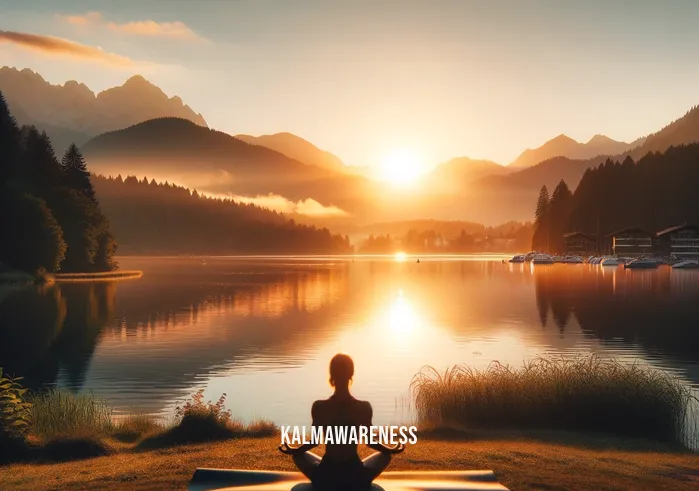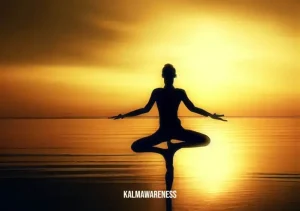Exploring the Mystical Dragon Pose in Yoga
| Description | Explanation |
|---|---|
| Pose Name | Dragon Pose |
| Original Name | Drākṣāsana |
| Difficulty Level | Intermediate |
| Pose Category | Hip Opening Asana |
| Exercise Duration | Hold for 30-60 seconds |
The Dragon Pose, or Drākṣāsana, is an invigorating yoga posture that falls under the category of hip-opening asanas. It draws its inspiration from the grace and strength of the mythical dragon. As you immerse yourself in this pose, you will feel the flow of energy through your hips, inviting a sense of liberation and rejuvenation.
Benefits of Dragon Pose in Yoga
Before we venture into the step-by-step guide to perform the Dragon Pose, let’s explore the incredible benefits this asana offers:
- Hip Flexor Stretch: The Dragon Pose deeply stretches the hip flexors, helping to alleviate tension and tightness in the hips, which is especially beneficial for those who spend long hours sitting.
- Thigh Strength: Holding this pose requires engaging the thigh muscles, promoting strength and toning in the thighs.
- Emotional Release: The hip area is believed to hold onto emotional tension. Practicing the Dragon Pose may help release emotional blockages and promote emotional well-being.
- Improved Digestion: Regular practice of this pose can aid in stimulating the abdominal organs, supporting healthy digestion.
- Balance and Focus: Dragon Pose challenges your balance and concentration, enhancing your focus and presence on the mat.
- Creativity and Transformation: Just like the mythical dragon symbolizes transformation, this pose can inspire your creative energies and bring a sense of metamorphosis into your life.
Step-by-Step Guide to Dragon Pose in Yoga
- Starting Position: Begin on all fours in a tabletop position. Ensure your wrists are directly under your shoulders, and your knees are aligned with your hips.
- Right Foot Forward: Slide your right knee forward between your hands, bringing it close to your right wrist. Your right ankle should be near your left wrist.
- Foot Placement: Point your right foot toes towards the top-left corner of the mat. The angle between your shin and thigh will vary based on your flexibility. For beginners, a wider angle might be more comfortable.
- Back Leg Extension: Stretch your left leg back, keeping your toes tucked under. The top of your left foot should rest on the mat.
- Hips Alignment: Ensure your hips are level and squared to the front of the mat. Avoid sinking into one hip.
- Upright Torso: Slowly lift your torso upright, engaging your core for stability. Place your hands on your right knee for support.
- Hip Flexor Stretch: As you lift your torso, you’ll feel a deep stretch in your right hip flexor. Be mindful of any discomfort and adjust the pose accordingly.
- Variations: For a more intense stretch, you can gently sink your hips lower towards the mat. Alternatively, for a milder variation, you can place blocks under your hands for added support.
- Breath and Hold: Take deep breaths as you hold the pose for 30-60 seconds. Keep your spine long and your gaze soft.
- Release and Repeat: To come out of the pose, press your hands into the mat and step your right foot back to the tabletop position. Shake out your hips and repeat the pose on the left side.

Unleashing the Dragon’s Fire
Welcome back to the enchanting world of yoga as we continue our exploration of the mesmerizing “Dragon Pose.” In this chapter, we will delve into the myriad benefits this pose offers, learn about the practitioners who may find it challenging, and discover exciting variations suitable for different levels of experience.
Benefits of Dragon Pose in Yoga
The Dragon Pose, also known as Drākṣāsana, is a potent yoga posture that bestows numerous physical and emotional benefits. Let’s dive into the captivating advantages of incorporating this pose into your yoga practice:
- Flexibility Enhancement: Regular practice of Dragon Pose increases hip and groin flexibility, aiding in improved range of motion and ease in other yoga poses.
- Stress Relief: As you breathe deeply and surrender into the pose, you release tension and stress, promoting relaxation and inner calm.
- Hip and Thigh Strengthening: Holding the Dragon Pose strengthens the hip and thigh muscles, providing stability and support to the lower body.
- Energetic Balance: The pose stimulates the sacral chakra, the energy center associated with creativity and emotional balance.
- Spine Extension: As you lift your torso, the pose encourages lengthening of the spine, improving posture and alignment.
- Mind-Body Connection: The focused concentration required in this pose fosters a deeper mind-body connection, promoting mindfulness and self-awareness.
- Emotional Release: Dragon Pose is believed to release stored emotions in the hip area, creating a sense of liberation and emotional healing.
Who Should Avoid Dragon Pose?
While the Dragon Pose offers an array of benefits, it may not be suitable for everyone. Practitioners with the following conditions or circumstances should avoid or modify the pose:
- Knee Injuries: If you have knee issues or discomfort, it’s essential to exercise caution or opt for modifications to prevent further strain.
- Hip Problems: Individuals with severe hip injuries or hip pain should avoid this pose or practice it under the guidance of a qualified yoga instructor.
- Pregnancy: Pregnant individuals should refrain from practicing the Dragon Pose, especially in the later stages of pregnancy, as it puts pressure on the abdomen.
- High Blood Pressure: Those with uncontrolled high blood pressure should avoid this pose, as it can lead to increased blood pressure during the intense stretch.
- Lower Back Issues: If you have chronic lower back pain or injuries, consider modifications or avoid the pose to prevent strain on the lumbar spine.
Variations of Dragon Pose in Yoga
Dragon Pose can be modified to suit practitioners of different experience levels. Here are some variations to explore:
- Beginner Variation: For beginners or those with limited flexibility, use yoga props like blocks or cushions under the front knee for added support.
- Intermediate Variation: As you gain comfort in the pose, deepen the stretch by sinking the hips lower and gently arching the back.
- Advanced Variation: Advanced practitioners can explore deeper variations like reaching the arms overhead or lifting the back foot off the mat.
- Dynamic Flow: Incorporate the Dragon Pose into a dynamic flow, transitioning from downward-facing dog to low lunge, and back to the dragon position.
- Arm Balance Transition: Advanced yogis can explore transitioning into arm balances like side plank or fallen triangle from the Dragon Pose.

Embracing the Dragon’s Spirit
As we venture further into the mystical realm of yoga, we now explore the rich history and profound spiritual significance of the awe-inspiring “Dragon Pose.” Discover the secrets of this ancient posture, along with valuable tips, common mistakes to avoid, and complementary poses that amplify the benefits of the Dragon Pose.
The History of Dragon Pose
The roots of Dragon Pose can be traced back to ancient yoga traditions, where the practice of asanas was deeply intertwined with spiritual and mythical symbolism. In many Eastern cultures, dragons are revered as powerful creatures embodying strength, wisdom, and transformation. The yoga practitioners of yesteryears observed the grace and fluidity of dragons in their movements, which inspired the creation of the Drākṣāsana.
The Spiritual Significance of Dragon Pose
Dragon Pose holds a profound spiritual significance, not only in its mythical representation but also in its impact on the practitioner’s inner journey. As you embody the essence of the dragon, you tap into the following spiritual aspects:
- Transformation and Rebirth: Just as dragons undergo metamorphosis, the pose symbolizes personal transformation and the shedding of old patterns.
- Rooted in Strength: Dragons are considered protectors and guardians. In the pose, you connect with your inner strength and power, becoming your own protector.
- Balancing Energies: The dragon is believed to symbolize the balance between Yin and Yang energies. In the pose, you harmonize these opposing forces within yourself.
- Connection to Elemental Forces: Dragons are often associated with the elements of water and fire. This pose cultivates a sense of connection to these elemental energies.
Tips for Getting the Most out of Dragon Pose in Yoga
To fully embrace the magic of Dragon Pose, keep these valuable tips in mind during your practice:
- Warm-Up: Ensure you warm up your hips, hamstrings, and quadriceps before attempting the pose. A few rounds of Sun Salutations can be an excellent way to prepare your body.
- Breath Awareness: Maintain steady and deep breaths throughout the pose. Let the breath guide you through the intensity of the stretch.
- Alignment Matters: Pay attention to aligning your front knee directly over the ankle and your hips squared to the front of the mat.
- Engage the Core: To protect your lower back, engage your core muscles and draw the navel towards the spine.
Common Mistakes to Avoid
Avoid these common pitfalls to ensure a safe and effective practice:
- Sinking Hips: Don’t let your hips sag down towards the floor. Engage your core and keep your hips level.
- Overarching Back: Be mindful of not overly arching your back. Maintain a neutral spine and avoid straining your lower back.
- Front Knee Alignment: Ensure your front knee doesn’t go past your ankle to avoid unnecessary pressure on the knee joint.
Modifications for Injuries or Limited Flexibility
For individuals with injuries or limited flexibility, try these modifications:
- Use Props: Place blocks under your hands for added support if you can’t reach the floor.
- Knee Comfort: Fold a blanket or cushion under your back knee for cushioning and comfort.
Complementary Poses
To enhance the benefits of the Dragon Pose, incorporate these complementary poses into your practice:
- Pigeon Pose (Eka Pada Rajakapotasana): Deepens hip flexibility and complements the hip-opening aspect of Dragon Pose.
- Seated Forward Bend (Paschimottanasana): Stretches the hamstrings, enhancing flexibility for the Dragon Pose.
- Cow Face Pose (Gomukhasana): Opens the shoulders and complements the upper body engagement in Dragon Pose.
As we reach the culmination of our magical journey through the Dragon Pose, we invite you to embrace the spirit of the dragon within you. May this ancient asana continue to inspire your transformation, strength, and spiritual growth on and off the yoga mat.
Namaste. 🙏





